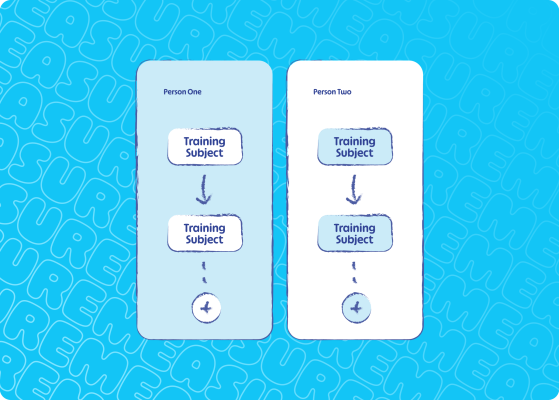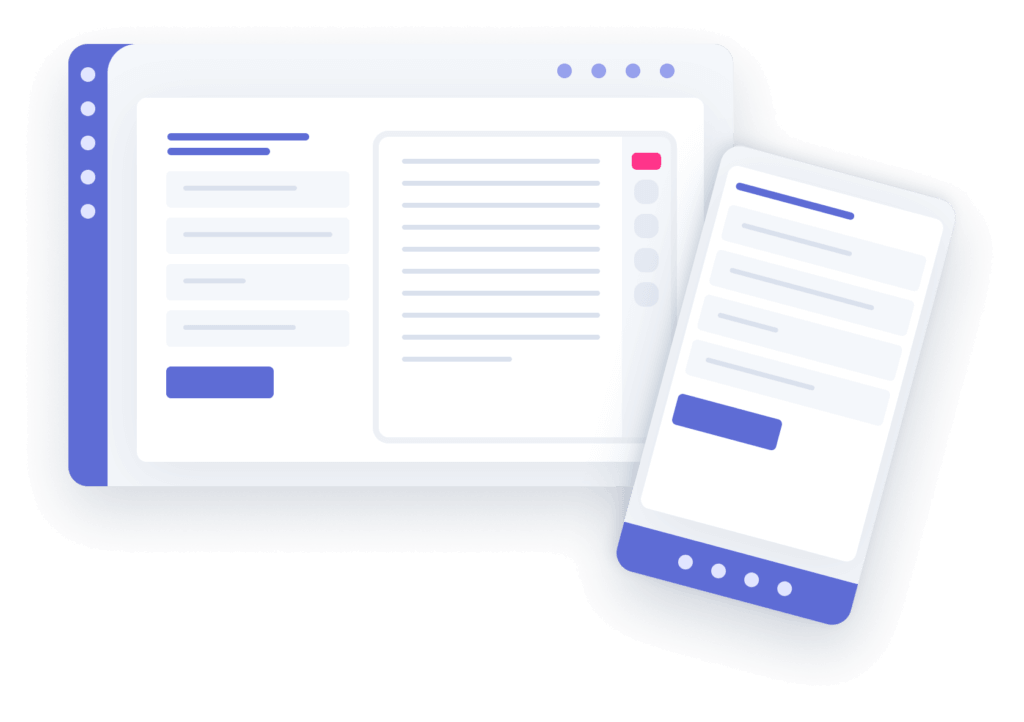Introduction: The world's best teams use technology for training
Did you know that the best teams on earth use technology for employee training and performance?
The English Premier League (EPL), the UK Football League, is widely debated as the most physically demanding league in global football, with a notable rise in the athleticism expected from players over the years. Currently, leading teams participating in European competitions engage in approximately 60 games per season, which is around ten more matches compared to two decades ago. This increase in game volume is complemented by additional training time, resulting in modern players accomplishing approximately 2.5 times more “work” than their counterparts from 15 to 20 years ago.
To efficiently distribute training across its geographically dispersed employee base, NASCAR created NASCAR University as a way to actualize their belief that people are the winning competitive difference – both on and off the track. The custom educational platform housed on the company’s web portal boasts a blend of live and online learning, focused on enriching a broad skill set.
But you’re not NASCAR and you don’t plan on playing football anytime soon. So how does this help you?
Why you need to consider employee training technology
When McKinsey studied the success of various companies’ responses during the COVID-19 pandemic, 67% of leading companies attributed their success to being more advanced in their technology usage prior to the pandemic.
While it didn’t apply only to employee training technology, those companies with technology adapted for learning and training outperformed their peers.
But we’re not in a pandemic anymore?
No, we’re not but in the fast-paced, ever-evolving corporate landscape, continuous learning and development have become integral to success.
As businesses strive to stay ahead of the competition, one powerful ally stands out: technology. The digital era has revolutionized employee training, offering exciting new opportunities to enhance learning experiences and foster a skilled, engaged, and empowered workforce.
Chipotle, case in point
The best companies understand that knowledge means growth.
Chipotle is attempting to counter the revolving door trend of staff in the fast food industry through employee training. In 2018, the company announced it was reinvesting more than one-third of anticipated savings from tax law changes into its employees.
And since the dawn of the pandemic, Chipotle has enhanced its employee development plans by adding more than 5,500 remote courses.
And if you still think that utilizing employee training technology doesn’t apply to you, check out how industries like construction and real estate are utilizing technology to upskill workers.
The benefits of employee training technology
So maybe you’re not in the business of football, NASCAR racing, or fast food, but we have no doubt that if you’re reading this, it’s your goal to be number 1.
And there’s a reason that the best teams in the world embrace technology for training.
Continuous Learning
Once upon a time, people went to university and learn the skills they needed, got a career, and perhaps did training every once in a while.
Continuous learning is the new approach of always expanding your knowledge to gain new skills and expertise. Embracing the journey of lifelong learning not only enriches personal growth but also strengthens the collective potential of organizations, driving progress and innovation in every sphere of the business world.
It is of paramount importance in the professional world, as it empowers individuals to adapt, grow, and excel in their careers. In today’s rapidly evolving landscape, staying stagnant is not an option; instead, embracing a mindset of constant development ensures that individuals remain relevant and capable of meeting new challenges head-on.
Whether it involves acquiring new skills, staying updated on industry trends, or exploring innovative approaches, continuous learning fosters a sense of curiosity and open-mindedness. Moreover, it enables professionals to stay ahead of the curve, providing them with a competitive edge and increasing their value to employers.
Data-driven insights
Speaking of the world’s best teams, there was a time when football players used to arrive for a game after a night out and see how they did. Nowadays, training is data-driven. Players and their teams know how much to eat and sleep and the best training in order to perform the best.
Data has become a valuable asset for businesses, and its role in employee training is no exception. Learning analytics provides valuable insights into the effectiveness of training programs, enabling organizations to refine their strategies and improve learning outcomes.
By analyzing data, businesses can identify knowledge gaps, track employee progress, and continuously adapt their training methods to meet evolving needs.
Enhanced flexibility
In a world where smartphones have become an extension of ourselves, mobile learning is a natural progression. Mobile learning apps allow employees to access training materials on the go, making the most of their idle moments. Microlearning, which involves delivering bite-sized content, ensures that employees can efficiently acquire new knowledge without feeling overwhelmed.
In addition to accessing information on a preferred device, technology enables employees to learn at their own pace. This accessibility and flexibility ensure that training programs reach a broader audience and can be adapted across the organization irrespective of role.
The Digital Learning Revolution and Reach
Gone are the days of dreary, classroom-style training sessions. Technology has brought forth a digital learning revolution that is redefining employee training. Online learning platforms and interactive tools have opened up a world of knowledge accessible at employees’ fingertips. This flexible and self-paced learning model empowers individuals to take control of their development and grow both personally and professionally.
This is not to mention the reach that technology allows for enabling team members, irrespective of geographical location, role or level within the organization, to access training and company information.
Harnessing the power of company process
Employee learning technology harnesses the power of company processes by streamlining and optimizing the acquisition of essential knowledge and skills throughout the organization. By offering a centralized platform for training and development, employees can access relevant and up-to-date content, enabling them to stay aligned with the company’s evolving goals and strategies. Additionally, learning technology facilitates the dissemination of standardized information, ensuring consistent understanding and implementation of critical processes across departments.
As a result, employees become more efficient and competent, leading to improved productivity, reduced errors, and enhanced overall performance, ultimately contributing to the company’s success and competitiveness in the market.
Creating engaging learning
These days you need the Netflix Effect to keep learning engaging.
The Netflix Effect means creating learning that is engaging and, yes, even entertaining. This helps new hires combat overwhelm and prevents current team members from getting bored.
Make sure the technology you enlist utilizes rich media to create engaging learning. While using video and audio in training isn’t new, it makes content easier to consume.
8 Ways to implement employee training technology
You may not be in the world of high-performing sport but there’s no reason you can’t utilize the best technology to train your teams.
Implementing technology in employee training and development should be a well-planned and systematic process. Here’s a step-by-step approach to achieving this:
1. Assess Training Needs and Objectives
Conduct a thorough analysis of your organization’s training needs and objectives. Identify the skills and knowledge gaps among your employees, considering both individual and team requirements. Understand the business goals you want to achieve through training and how they align with the overall organizational strategy.
2. Set Specific Learning Goals
Based on the assessment, define clear and specific learning goals for each training program. These goals should be measurable and aligned with the organization’s needs and objectives. Having well-defined goals will help you determine the effectiveness of the training later on.
3. Identify Appropriate Technological Solutions
Once you know your training needs and objectives, explore various technological solutions that can address those requirements. This may include Learning Management Systems (LMS), online courses, virtual classrooms, simulations, gamification, virtual reality, augmented reality, or a combination of these technologies. Choose the ones that best fit your organization’s goals and budget.
4. Evaluate Technological Capabilities
Before implementing any technology, assess your organization’s existing technological infrastructure and capabilities. Ensure that the chosen solutions can be seamlessly integrated into your systems and that employees have access to the necessary hardware and software.
5. Content Development
Create or curate training content that aligns with the learning goals and leverages the selected technological solutions effectively. The content should be engaging, interactive, and tailored to the needs of your employees and the business.
6. Employee Engagement and Communication
Communication is crucial throughout the process. Inform your employees about the upcoming training initiatives, explain the benefits, and provide them with any necessary training on how to use the technology effectively.
7. Ensure Continuous Improvement
Training and technology are not static; they evolve with time. Continuously review and update your training programs and technological solutions to ensure they remain relevant and effective.
8. Measure Impact
Finally, assess the impact of technology-based training on employee performance and business outcomes. Use key performance indicators (KPIs) to measure the success of the training initiatives and make data-driven decisions for future training and development efforts.
Consider technology ROI and metrics such as onboarding time and gaps in company knowledge as metrics.
Bottom Line
94% of employees would stay longer in companies willing to invest in their professional development. The best teams in the world know this and have invested millions of dollars into technology that promotes performance and development.
As technology continues to reshape the corporate landscape, the potential for utilizing it to enhance employee training knows no bounds. By harnessing employee training technology, organizations pave the way for a future-ready, agile, and skilled workforce that thrives in an ever-changing world.
Loved this article? Check out our 3 Types of Employee Training or download our eBook;
Future-Ready HR:
A Guide to Using AI and Automation for Training

We interviewed the top human resource experts to discover AI and HR trends for the future.
Download the whitepaper to discover how AI and automation can revolutionize onboarding and training, empowering you to develop a future-ready workforce today!










